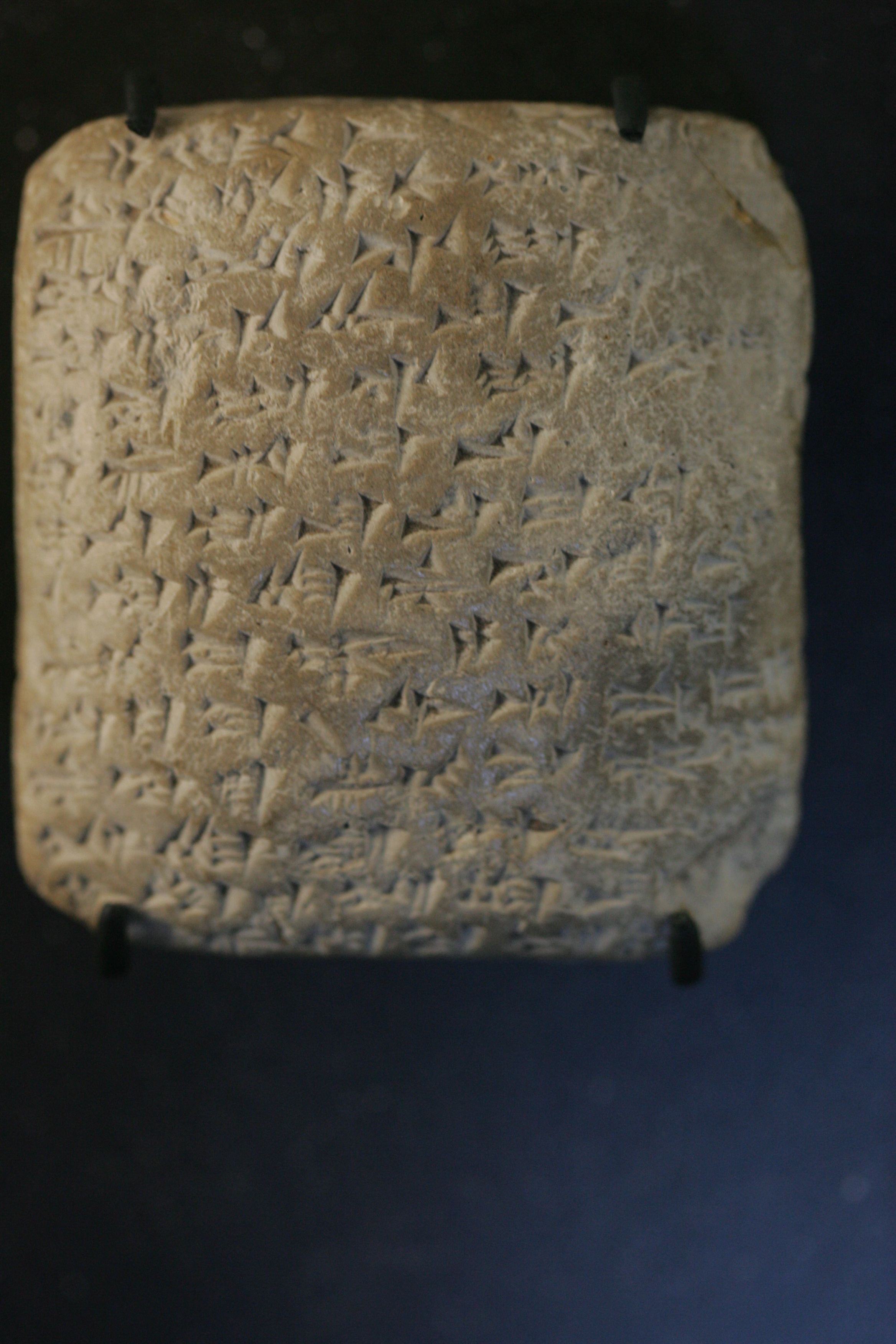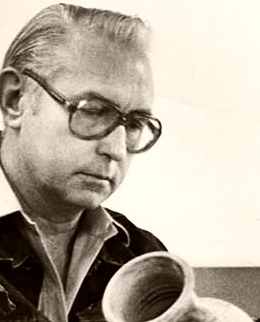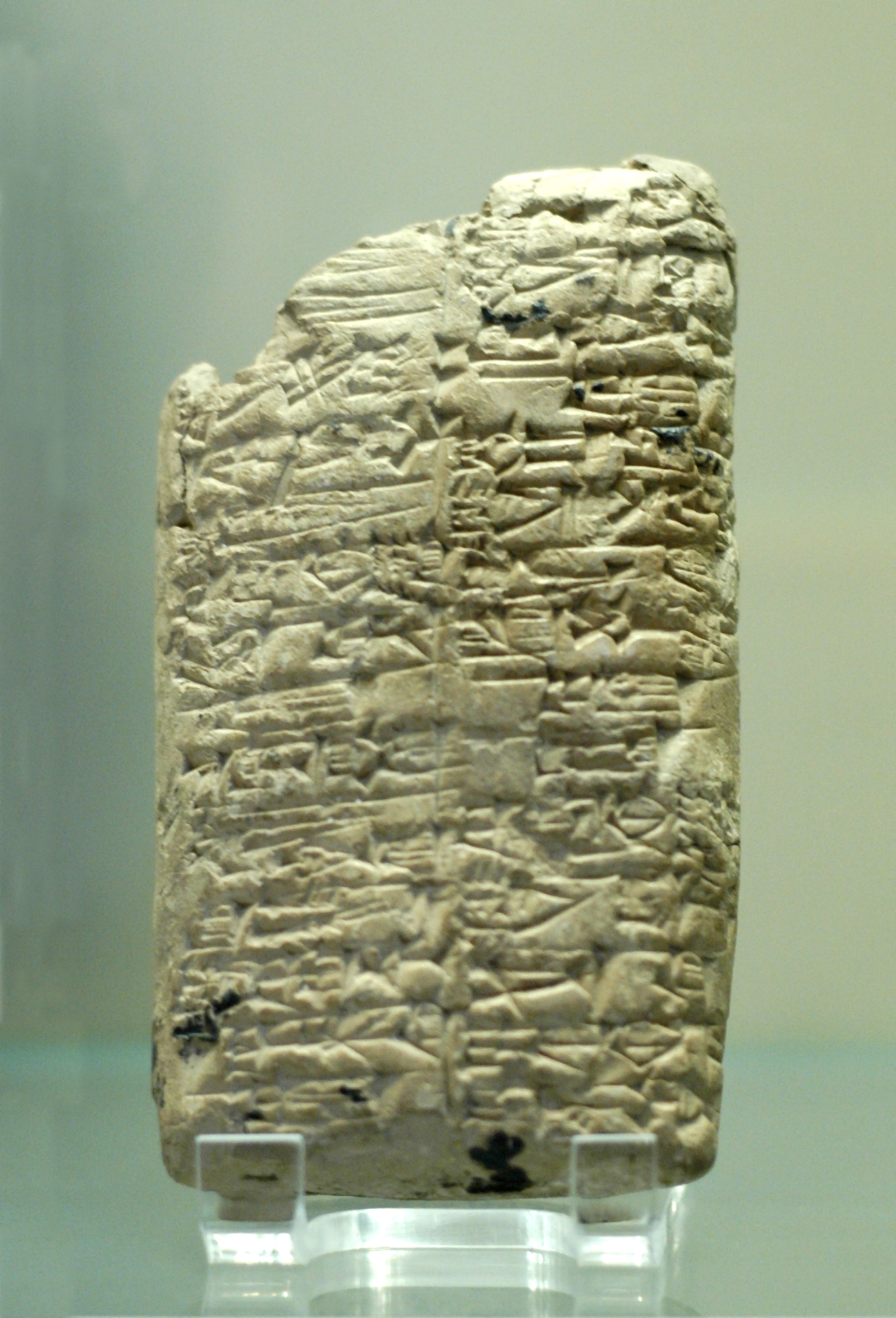|
Um (cuneiform)
The cuneiform alphabetic um sign, also dup, tup, ṭup, and DUB, the Sumerogram (logogram), for Akkadian language "ṭuppu",Parpola, 1971. ''The Standard Babylonian Epic of Gilgamesh'', Glossary, pp. 119-145, ṭuppu, p. 144. (= the clay tablet), is found in both the 14th century BC Amarna letters and the Epic of Gilgamesh. In the Amarna letters as ''um'', it is found as ''um-ma'' in the introduction of the letters as ''"Message (thus)"''...(and then the PN (personal name) of the individual sending, or authoring the letter). In specific texts with dialogue, for example Amarna letter EA 19, ''Love and Gold'', an extensive discussion is made by the king of Babylon about his father, ancestry, friendship between kings, envoys, women (for the harem, or wife), etc., and consequently the dialogue is preceded by ''um-ma'' ("quote"), then the dialogue by the messenger, (or the king). References * Moran, William L. 1987, 1992. ''The Amarna Letters.'' Johns Hopkins University Press, 19 ... [...More Info...] [...Related Items...] OR: [Wikipedia] [Google] [Baidu] |
B238ellst
B, or b, is the second letter of the Latin alphabet, used in the modern English alphabet, the alphabets of other western European languages and others worldwide. Its name in English is ''bee'' (pronounced ), plural ''bees''. It represents the voiced bilabial stop in many languages, including English. In some other languages, it is used to represent other bilabial consonants. History The Roman derived from the Greek capital beta via its Etruscan and Cumaean variants. The Greek letter was an adaptation of the Phoenician letter bēt . The Egyptian hieroglyph for the consonant /b/ had been an image of a foot and calf , but bēt (Phoenician for "house") was a modified form of a Proto-Sinaitic glyph adapted from the separate hieroglyph Pr meaning "house". The Hebrew letter bet is a separate development of the Phoenician letter. By Byzantine times, the Greek letter came to be pronounced /v/, so that it is known in modern Greek as ''víta'' (still written ). The ... [...More Info...] [...Related Items...] OR: [Wikipedia] [Google] [Baidu] |
Amarna Letter EA 19
Amarna letter EA 19 is a tall clay tablet letter of 13 paragraphs, in relatively pristine condition, with some minor flaws on the clay, but a complete enough story that some included words can complete the story of the letter. Entitled "Love and Gold", the letter is about gold from Egypt (gold mine production), love between father-king ancestors and the current relationship between the King of Mitanni and the Pharaoh of Misri (Egypt), and marriage of women from King Tushratta of Mitanni to the Pharaoh of Egypt. Besides the Double Line Ruling, for paragraphing (7 paragraphs on ''obverse''), an overwritten Single Line Rule is at clay tablet left margin, as well as cuneiform characters inscribed upon a vertical right margin line of Single Line Rule. (see left margin here The Amarna letters, about 300, numbered up to EA 382, are a mid 14th century BC, around 1386 BC and 45 years later, correspondence. The initial corpus of letters were found at Akhenaten's city Akhetaten, in the fl ... [...More Info...] [...Related Items...] OR: [Wikipedia] [Google] [Baidu] |
Amarna Letter EA 364
Amarna letter EA 364, titled ''Justified War,'' is a clay tablet letter from Ayyab, ruler of Aštartu, to Pharaoh Akhenaten (1350s–1330s BC). It is one of the Amarna letters, 382 in total, dating from Amarna letters#Chronology, c. 1360 – c. 1332 BC. The initial Text corpus, corpus of letters were found at the city of Akhetaten, Amarna, founded by Akhenaten, in the floor of the Bureau of Correspondence of Pharaoh. The letter is a reply to the pharaoh referring to a letter from the pharaoh's messenger Tahmassi. In it, Ayyab, ''governing-man'' (often—("who/which"-(ša (cuneiform), ša))-"LÚ (man Sumerogram), man, URU (city Sumerogram), city")-Ashteroth Karnaim, Aštartu, who is in control of one of the city-states in Canaan, is stating his commitment to guarding the city (and the region), after three cities in the region were taken in attacks by Habiru raiders. The tablet measures about 4 in x 2.3 in and is in relatively pristine condition. Because of its narrowness, each l ... [...More Info...] [...Related Items...] OR: [Wikipedia] [Google] [Baidu] |
Anson Rainey
Anson Frank Rainey (January 11, 1930 – February 19, 2011) was professor emeritus of ancient Near Eastern cultures and Semitic linguistics at Tel Aviv University. He is known in particular for contributions to the study of the Amarna tablets, the noted administrative letters from the period of Pharaoh Akhenaten's rule during the 18th Dynasty of Egypt.Rollston, C. (2011)Among the last of the titans: Aspects of Professor Anson Rainey's life and legacy (1930–2011)(February 20, 2011); retrieved May 22, 2017 He authored and edited books and articles on the cultures, languages and geography of the Biblical lands. Early life Anson Rainey was born in Dallas, Texas, in 1930. Upon the death of his father that same year, he was left with his maternal grandparents. He attended Brown Military Academy in San Diego, California, from 1943 to 1946. After one semester of study there – as a cadet battalion commander – he served as assistant commandant at Southern California M ... [...More Info...] [...Related Items...] OR: [Wikipedia] [Google] [Baidu] |
Neo-Assyrian Text Corpus Project
The Neo-Assyrian Text Corpus Project is an international scholarly project aimed at collecting and publishing ancient Assyrian texts of the Neo-Assyrian Empire and studies based on them. Its headquarters are in Helsinki in Finland. State Archives of Assyria State Archives of Assyria Cuneiform Texts State Archives of Assyria Studies State Archives of Assyria Literary Texts See also *Epic of Gilgamesh *Text corpus References *Cole, S. '' Nippur in Late Assyrian Times, c. 755-612 BC,'' by Steven W. Cole, (The Neo-Assyrian Text Corpus Project, University of Helsinki, by Vammalan Kirjapaino Oy, Finland), c 1996. *Novotny, J. ''The Standard Babylon Babylon ( ) was an ancient city located on the lower Euphrates river in southern Mesopotamia, within modern-day Hillah, Iraq, about south of modern-day Baghdad. Babylon functioned as the main cultural and political centre of the Akkadian-s ...ian'' '' Etana Epic'', by Jamie R. Novotny, (University of Helsinki, Ibid.), c ... [...More Info...] [...Related Items...] OR: [Wikipedia] [Google] [Baidu] |
Simo Parpola
Simo Kaarlo Antero Parpola (born 4 July 1943) is a Finnish Assyriologist specializing in the Neo-Assyrian Empire and Professor emeritus of Assyriology at the University of Helsinki (retired fall 2009). Career Simo Parpola studied Assyriology, Classics and Semitic Philology at the University of Helsinki, the Pontifical Biblical Institute and the British Museum in 1961–1968. He completed his PhD in Helsinki and began his academic career as ''Wissenschaftlicher Assistent'' of Karlheinz Deller at the Seminar für Sprachen und Kulturen des Vorderen Orients of the University of Heidelberg in 1969. Between 1973 and 1976 he was Docent of Assyriology and Research Fellow at the University of Helsinki, and from 1977 to 1979 associate professor of Assyriology with tenure at the Oriental Institute of the University of Chicago. He was appointed extraordinary professor of Assyriology at the University of Helsinki in 1978 and has directed the University's Neo-Assyrian Text Corpus Project sin ... [...More Info...] [...Related Items...] OR: [Wikipedia] [Google] [Baidu] |
William L
William is a masculine given name of Germanic origin. It became popular in England after the Norman conquest in 1066,All Things William"Meaning & Origin of the Name"/ref> and remained so throughout the Middle Ages and into the modern era. It is sometimes abbreviated "Wm." Shortened familiar versions in English include Will or Wil, Wills, Willy, Willie, Bill, Billie, and Billy. A common Irish form is Liam. Scottish diminutives include Wull, Willie or Wullie (as in Oor Wullie). Female forms include Willa, Willemina, Wilma and Wilhelmina. Etymology William is related to the German given name ''Wilhelm''. Both ultimately descend from Proto-Germanic ''*Wiljahelmaz'', with a direct cognate also in the Old Norse name ''Vilhjalmr'' and a West Germanic borrowing into Medieval Latin ''Willelmus''. The Proto-Germanic name is a compound of *''wiljô'' "will, wish, desire" and *''helmaz'' "helm, helmet".Hanks, Hardcastle and Hodges, ''Oxford Dictionary of First Names'', Oxfor ... [...More Info...] [...Related Items...] OR: [Wikipedia] [Google] [Baidu] |
Babylon
Babylon ( ) was an ancient city located on the lower Euphrates river in southern Mesopotamia, within modern-day Hillah, Iraq, about south of modern-day Baghdad. Babylon functioned as the main cultural and political centre of the Akkadian-speaking region of Babylonia. Its rulers established two important empires in antiquity, the 19th–16th century BC Old Babylonian Empire, and the 7th–6th century BC Neo-Babylonian Empire. Babylon was also used as a regional capital of other empires, such as the Achaemenid Empire. Babylon was one of the most important urban centres of the ancient Near East, until its decline during the Hellenistic period. Nearby ancient sites are Kish, Borsippa, Dilbat, and Kutha. The earliest known mention of Babylon as a small town appears on a clay tablet from the reign of Shar-Kali-Sharri (2217–2193 BC), of the Akkadian Empire. Babylon was merely a religious and cultural centre at this point and neither an independent state nor a large city, s ... [...More Info...] [...Related Items...] OR: [Wikipedia] [Google] [Baidu] |
Ayyab Letter Mp3h8880
Ayyab was a ruler of Aštartu (present day Tell Ashtara) south of Damascus. According to the Amarna letters, cities/city-states and their kings in the region — just like countries to the north, such as History of the Hittites, Hatti of the Hittites, fell prey to a wave of attacks by ʿApiru raiders. The Amarna correspondence Text corpus, corpus covers a period from 1350 BC, 1350–1335 BC. Another ruler of Aštartu cited in the Amarna letters is Biridašwa. The letters do not clearly indicate their title, leading some scholars to describe them as kings of Damascus (Dimašqu) while others believe they were high Egyptian officials, possibly mayors.Wayne Thomas Pitard''Ancient Damascus: A Historical Study of the Syrian City-State from Earliest Times Until Its Fall to the Assyrians in 732 B.C.E.''Eisenbrauns, 1987. p. 67. Ayyab's letter EA 364 Ayyab is the author of only one letter to the Ancient Egypt, Egyptian pharaoh, letter EA 364-(EA (el Amarna), EA for 'el Amarna'). Title: ' ... [...More Info...] [...Related Items...] OR: [Wikipedia] [Google] [Baidu] |
Clay Tablet
In the Ancient Near East, clay tablets (Akkadian language, Akkadian ) were used as a writing medium, especially for writing in cuneiform, throughout the Bronze Age and well into the Iron Age. Cuneiform characters were imprinted on a wet clay tablet with a stylus often made of Reed (plant), reed (reed pen). Once written upon, many tablets were dried in the sun or air, remaining fragile. Later, these unfired clay tablets could be soaked in water and recycled into new clean tablets. Other tablets, once written, were either deliberately fired in hot kilns, or inadvertently fired when buildings were burnt down by accident or during conflict, making them hard and durable. Collections of these clay documents made up the first archives. They were at the root of the first library, libraries. Tens of thousands of written tablets, including many fragments, have been found in the Middle East. Most of the documents on tablets that survive from the Minoan civilization, Minoan and Mycenaean ... [...More Info...] [...Related Items...] OR: [Wikipedia] [Google] [Baidu] |
Akkadian Language
Akkadian ( ; )John Huehnergard & Christopher Woods, "Akkadian and Eblaite", ''The Cambridge Encyclopedia of the World's Ancient Languages''. Ed. Roger D. Woodard (2004, Cambridge) Pages 218–280 was an East Semitic language that is attested in ancient Mesopotamia ( Akkad, Assyria, Isin, Larsa, Babylonia and perhaps Dilmun) from the mid- third millennium BC until its gradual replacement in common use by Old Aramaic among Assyrians and Babylonians from the 8th century BC. Akkadian, which is the earliest documented Semitic language, is named after the city of Akkad, a major centre of Mesopotamian civilization during the Akkadian Empire (–2154 BC). It was written using the cuneiform script, originally used for Sumerian, but also used to write multiple languages in the region including Eblaite, Hurrian, Elamite, Old Persian and Hittite. The influence of Sumerian on Akkadian went beyond just the cuneiform script; owing to their close proximity, a lengthy span of con ... [...More Info...] [...Related Items...] OR: [Wikipedia] [Google] [Baidu] |






